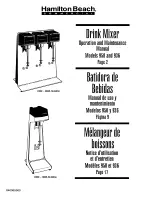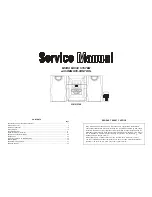
3 – Connections : Other connections
TASCAM DM-4800
User’s Manual
55
Other connections
MIDI connections (IN, OUT and THRU)
Use
these standard MIDI connectors to connect the DM-
4800 to other equipment. The
THRU
terminal also
functions as a MIDI Timecode output terminal.
This MIDI functionality can be used to provide either
open or closed MMC loop control of remote devices.
See “MIDI” on page 96 for details.
NOTE
The USB connector provides MIDI to and from a host
computer for DAW control, etc. There is no need to
make a separate MIDI connection to and from such a
computer.
RS-422 serial control terminal
This 9-pin D-
sub connector is used to provide control of suitably-
equipped devices, using P2 protocol, etc. See
“Remote operation” on page 105 for details.
GPI terminal
This 9-pin D-sub connector is used
to output signals on up to eight GPI ports, using a
common frame ground). See “GPI settings” on
page 45 for full details of how to set up and use this
port (in addition to the pinouts).
TIME CODE
This unbalanced RCA jack accepts
linear SMPTE/EBU timecode for synchronization
with other devices. Note that the DM-4800 does not
generate linear timecode, and can neither accept nor
generate vertical timecode.
WORD SYNC (IN and OUT/THRU)
In any
digital audio setup, it is important that there is one,
and only one, word sync source.
WARNING
More than one such word sync source can cause serious
problems, including possible damage to monitoring
equipment.
The DM-4800 can act as a word sync master or slave
(set up in software—see “Clock setting” on page 56).
The switch allows the
OUT
to act as a
THRU
when
the DM-4800 is receiving word sync signals, as well
as enabling and disabling 75
Ω
termination on the
input.
TO METER
Use the cable provided with the
optional meter bridge (MU-1000) to connect the
meter bridge to this connector of the DM-4800.
FOOT SW
Connect a standard momentary foot (or
other) switch to this 1/4" jack. It can either be push-
to-make or push-to-break, as the polarity can be
changed in software.
For details of how to do this, as well as how to set up
the footswitch, see “SWITCH utility” on page 45.
USB
This is used to connect the DM-4800 to a host
computer for bi-directional control. This is, the com-
puter can control the DM-4800—see the documenta-
tion supplied with the TASCAM TM Companion
utility software—and the DM-4800 can be set up as a
DAW controller, controlling the DAW software run-
ning on the host computer.
We strongly suggest that you use only the USB cable
supplied with the DM-4800 to make the USB con-
nection, and that this connection and disconnection
are made with the DAW software, or any other soft-
ware communicating with the DM-4800, not
running.
Note that no drivers are necessary when using the
DM-4800 with OS X or Windows XP.
Power input
As always, check to make sure that
the voltage requirements marked on the unit match
your power supply. Use a properly grounded power
supply, and connect the DM-4800 to it using a power
cord which provides grounding facilities (such as the
one provided with the DM-4800).
















































